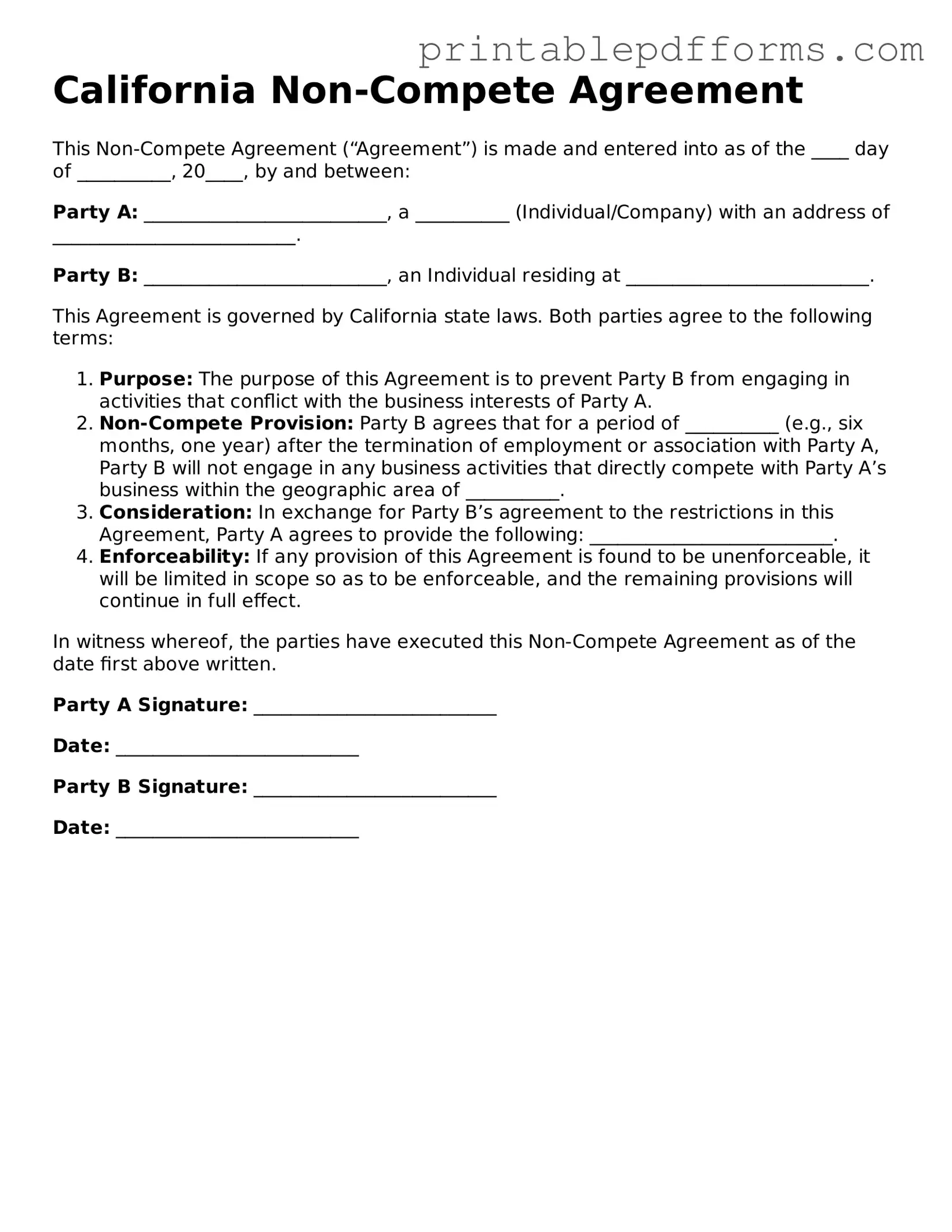California Non-Compete Agreement
This Non-Compete Agreement (“Agreement”) is made and entered into as of the ____ day of __________, 20____, by and between:
Party A: __________________________, a __________ (Individual/Company) with an address of __________________________.
Party B: __________________________, an Individual residing at __________________________.
This Agreement is governed by California state laws. Both parties agree to the following terms:
- Purpose: The purpose of this Agreement is to prevent Party B from engaging in activities that conflict with the business interests of Party A.
- Non-Compete Provision: Party B agrees that for a period of __________ (e.g., six months, one year) after the termination of employment or association with Party A, Party B will not engage in any business activities that directly compete with Party A’s business within the geographic area of __________.
- Consideration: In exchange for Party B’s agreement to the restrictions in this Agreement, Party A agrees to provide the following: __________________________.
- Enforceability: If any provision of this Agreement is found to be unenforceable, it will be limited in scope so as to be enforceable, and the remaining provisions will continue in full effect.
In witness whereof, the parties have executed this Non-Compete Agreement as of the date first above written.
Party A Signature: __________________________
Date: __________________________
Party B Signature: __________________________
Date: __________________________
